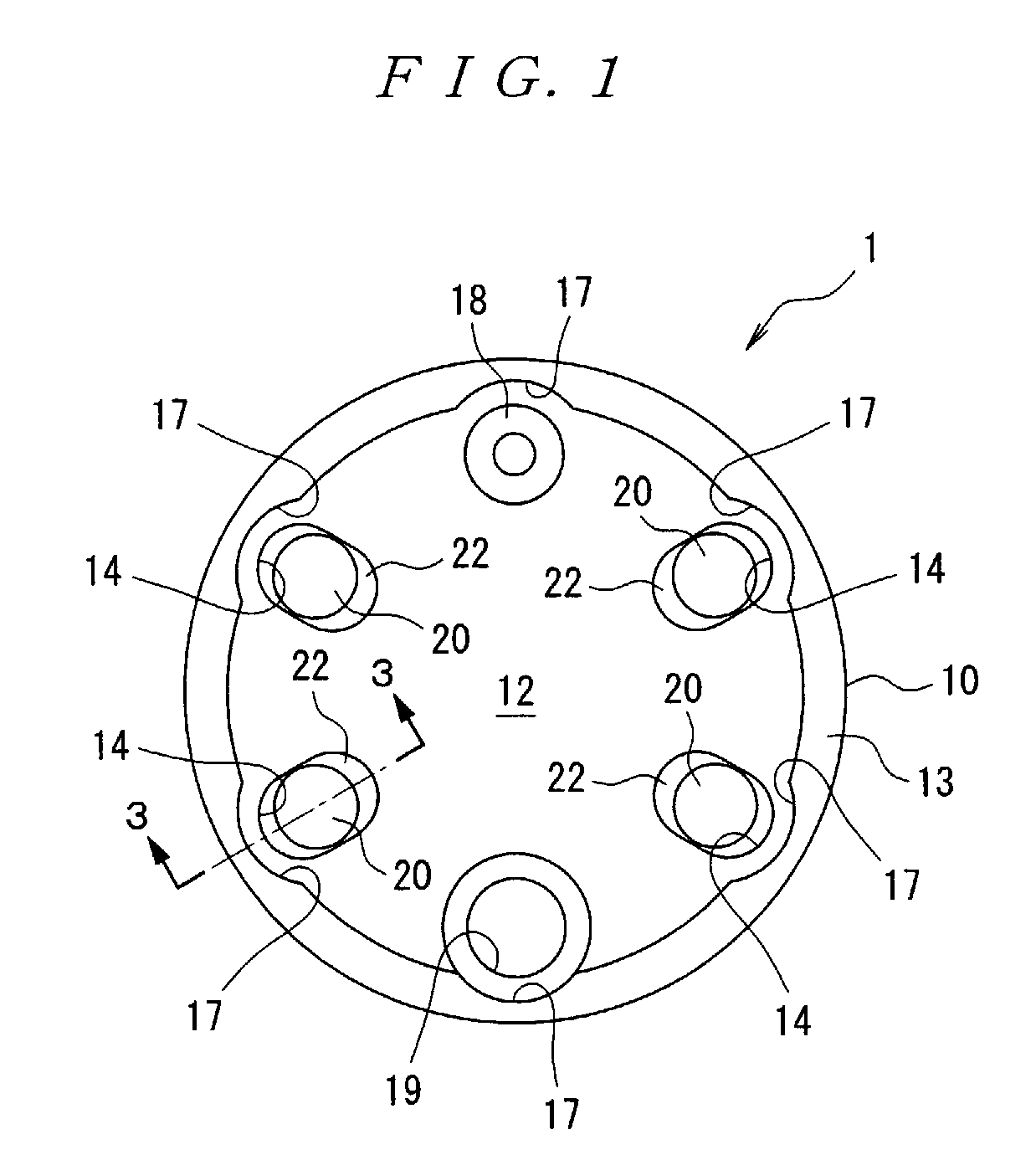Optical Connector
a technology of optical fibers and connectors, applied in the field of optical connectors, can solve the problems of lack of alignment of the central axes z of parallel beams, the need for large-scale manufacturing apparatus such as a cob>2 /sub>laser and arc discharge apparatus, and the inability to position the optical fiber 320
- Summary
- Abstract
- Description
- Claims
- Application Information
AI Technical Summary
Problems solved by technology
Method used
Image
Examples
Embodiment Construction
)
[0032]Next, embodiments of the present invention will be described with reference to the figures. In FIGS. 1 through 3, the optical connector 1 comprises a housing 10, a plurality of spherical lenses 20 (four lenses in the present embodiment), and a plurality of ferrules 30 (four ferrules in the present embodiment) that respectively incorporate optical fibers 31.
[0033]Here, the housing 10 is formed in a cylindrical shape as shown in FIGS. 1 and 2, and a circular recessed section 12 for mating with a mating optical connector (connector having the same shape as the optical connector 1) is formed in the front end portion (left end portion in FIGS. 2 and 3) of this housing. A cylindrical outer wall 13 that surrounds the recessed section 12 is provided on the outside of the recessed section 12. The housing 10 is manufactured from a resin into which a glass filler is mixed, but this housing may also be manufactured from a metal such as stainless steel. Furthermore, a plurality of ferrule...
PUM
 Login to View More
Login to View More Abstract
Description
Claims
Application Information
 Login to View More
Login to View More - R&D
- Intellectual Property
- Life Sciences
- Materials
- Tech Scout
- Unparalleled Data Quality
- Higher Quality Content
- 60% Fewer Hallucinations
Browse by: Latest US Patents, China's latest patents, Technical Efficacy Thesaurus, Application Domain, Technology Topic, Popular Technical Reports.
© 2025 PatSnap. All rights reserved.Legal|Privacy policy|Modern Slavery Act Transparency Statement|Sitemap|About US| Contact US: help@patsnap.com



